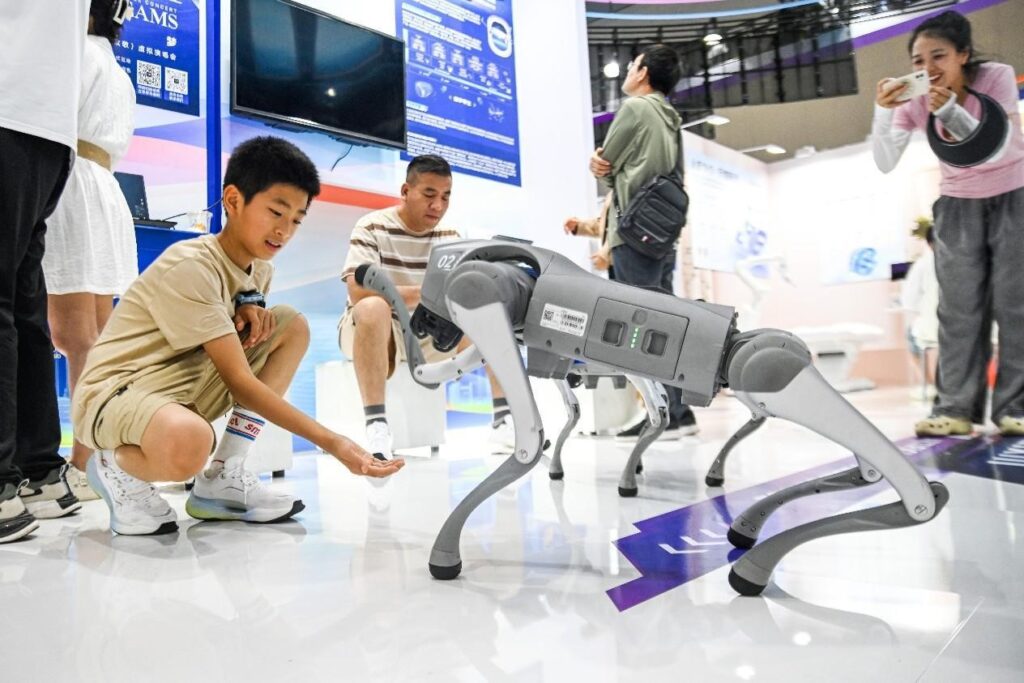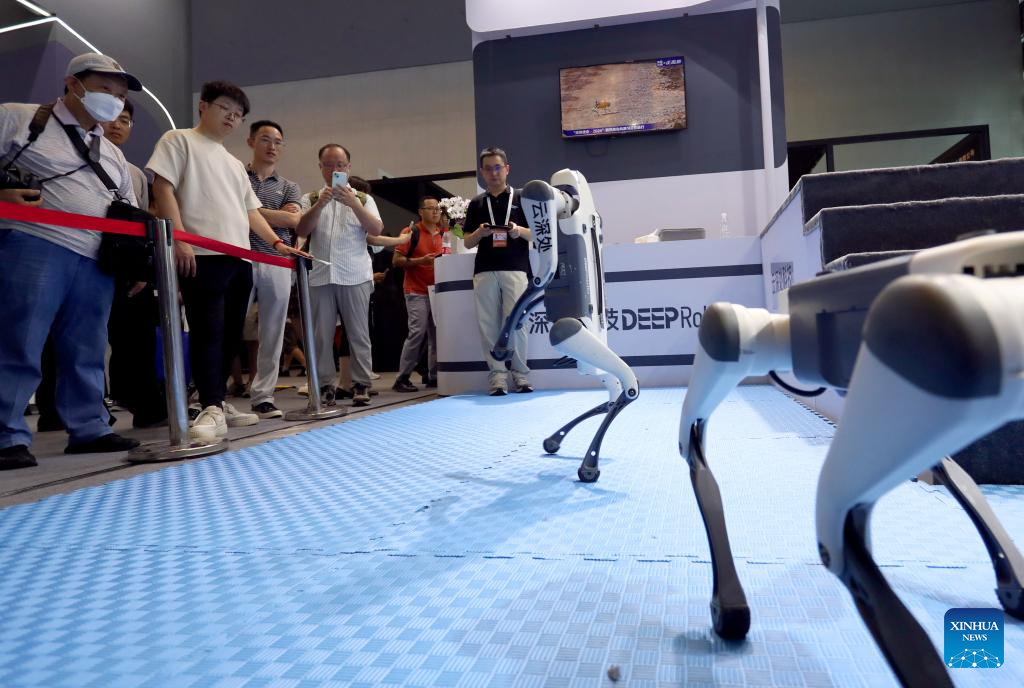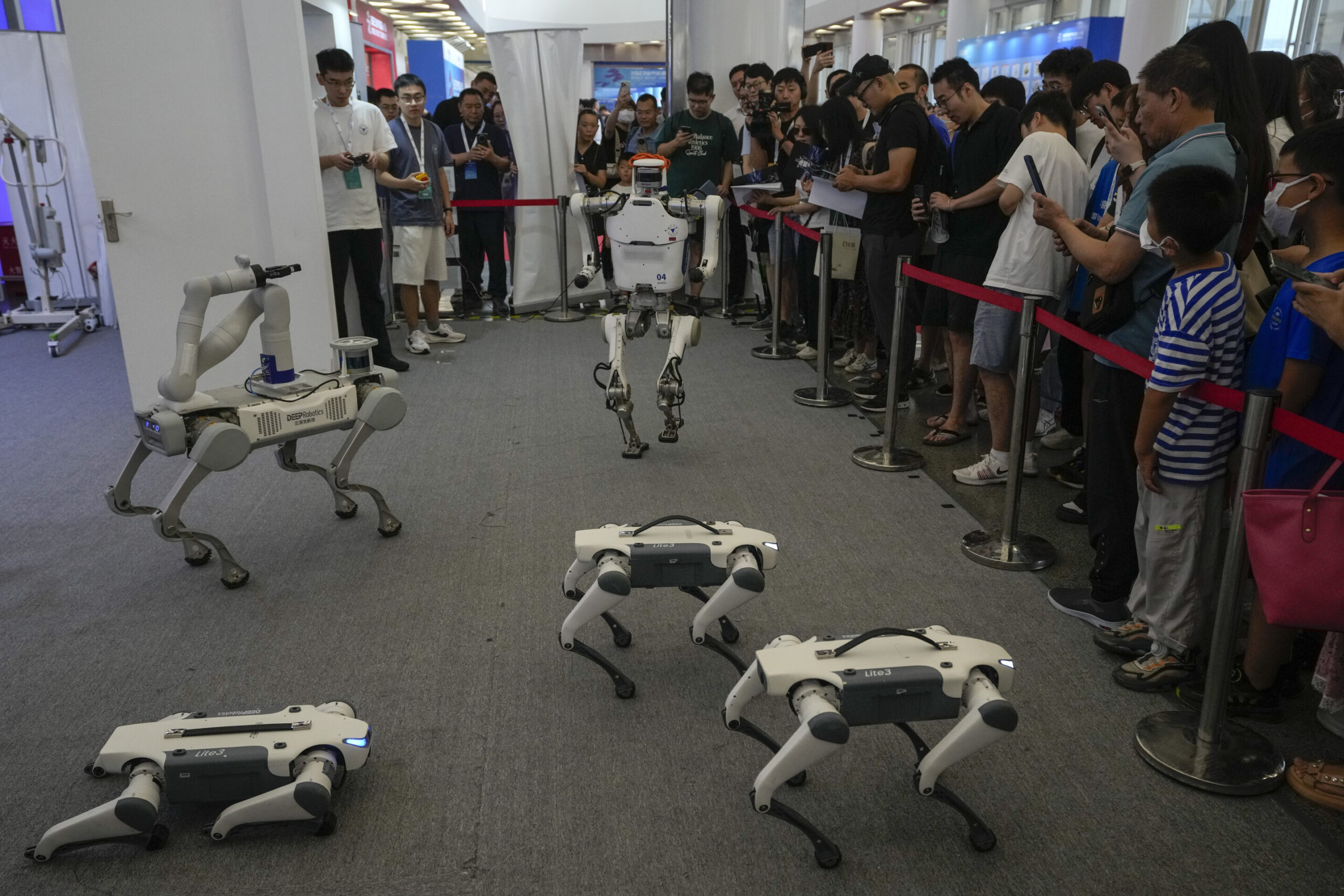Embodied intelligence robots are no longer a futuristic vision they are here, working alongside humans to solve complex real world problems. At the 2025 World Artificial Intelligence Conference (WAIC) held in Shanghai, DEEP Robotics made headlines by demonstrating how these machines are transforming industry norms through real world deployment and innovation.
WAIC 2025: A Global Stage for AI Breakthroughs
Held at the iconic Shanghai World Expo Center, WAIC 2025 gathered global leaders in artificial intelligence, with over 800 tech giants and emerging companies from across the globe. With the theme Intelligent Connectivity for a Shared Future this year’s event spanned a record 70,000 square meters, offering a glimpse into the future of AI technology and its tangible industrial applications.
DEEP Robotics, a pioneer in the field, emerged as one of the standout exhibitors. Its 150 square meter immersive setup drew large crowds and significant media attention as it showcased the real world use of embodied intelligence robots in high-risk industrial environments.
From Research to Real World Impact
DEEP Robotics has consistently pushed the boundaries of robotic capabilities, but their presence at WAIC 2025 marked a major leap forward particularly in industrial grade quadruped robots. Unlike conventional displays, DEEP Robotics offered a live, real time demonstration of a full electric power inspection scenario, complete with obstacle navigation, data collection, and autonomous response features.
Power Grid Inspection with Lite Series Robots
In one case study shared at WAIC, DEEP Robotics deployed its new generation Lite3 quadruped robots for electric grid inspection in a mountainous region of western China. These robots were required to autonomously inspect high voltage lines and substation infrastructure where human inspection is both hazardous and time consuming.
The results? A 42% reduction in inspection time, zero safety incidents, and improved predictive maintenance accuracy through AI powered fault detection. This case provided compelling evidence that embodied intelligence robots are not only viable they are essential for enhancing operational efficiency and safety.

Why Embodied Intelligence Matters
According to Dr. Li Haoran, a robotics expert and senior engineer at Tsinghua University, embodied intelligence marks a crucial turning point in AI development. Embodied intelligence robots are fundamentally different from traditional automation tools. They perceive, interpret, and interact with the environment in real time. The core of their intelligence comes from experience and adaptive learning, which mirrors human cognitive processes.
Dr. Li emphasized that DEEP Robotics’ integration of vision systems, sensor fusion, and neural adaptive behavior puts them at the forefront of this revolution.
Real World Relevance: Applications Across Industries
From energy inspection to emergency rescue, embodied intelligence robots are finding traction across a wide range of industries. At WAIC 2025, DEEP Robotics presented solutions tailored for. Oil and gas pipeline inspection, Underground mining, Disaster response and search and rescue, Agricultural surveying, Military reconnaissance.
Each demo was more than a technical marvel it was a business solution. Visitors witnessed robots climbing stairs, crossing rough terrain, and adapting to environmental changes capabilities that are critical in unpredictable and dangerous settings.
The Core Technologies Behind the Breakthrough
Behind the elegance of these machines lie groundbreaking technologies. DEEP Robotics’ latest Lite series integrates, Real time SLAM (Simultaneous Localization and Mapping), Multi modal perception systems, Adaptive terrain learning, AI driven decision algorithms, Remote cloud based control centers.
These advancements collectively enable embodied intelligence robots to execute missions with minimal human input, while learning and evolving through environmental feedback.
A Developer’s Take
Jing Wei, a robotics engineer who contributed to the Lite3 project, shared his perspective at WAIC. Working on embodied robotics is like teaching a child to walk, run, and solve problems except the child is made of metal and learns from terabytes of sensor data.
Jing emphasized that the most rewarding part of the job is seeing how these robots protect human lives by operating in environments too dangerous for humans.
Looking Ahead The Future of Embodied Robotics
DEEP Robotics’ presence at WAIC 2025 signals more than just technical prowess it reflects a larger industry shift toward practical, reliable robotic solutions. As AI evolves, the demand for adaptable, intelligent machines is growing rapidly.
In markets like construction, security, and logistics, the need for embodied intelligence robots is expected to surge. According to a report by the International Federation of Robotics, the global market for quadruped robots is projected to grow by 28% annually through 2030.
Governments and corporations are taking note. Several pilot programs are already underway in Europe and Asia to deploy these robots in public infrastructure maintenance, border patrol, and urban surveillance.

Robots With Purpose, Intelligence With Impact
DEEP Robotics‘ landmark exhibition at WAIC 2025 was more than a showcase it was a declaration. Embodied intelligence robots are no longer an experimental concept. They are already changing the way we work, maintain infrastructure, and respond to emergencies. Backed by advanced AI and real world use cases, these machines represent the next wave of innovation where intelligence is not just artificial but embodied, responsive, and ready for the real world.

